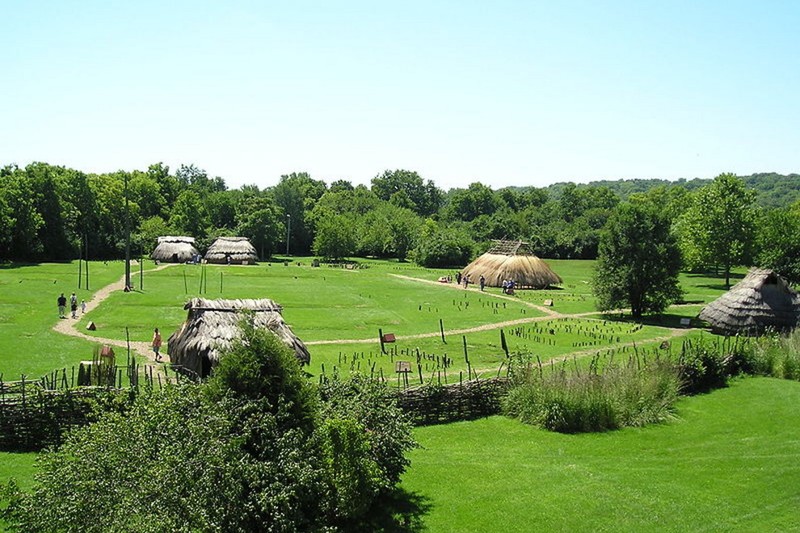Fort Ancient State Memorial
Introduction
Text-to-speech Audio
Images
Fort Ancient State Memorial grounds

Backstory and Context
Text-to-speech Audio
The Hopewell Civilization dates back to approximately 2000 BCE. Rather than referring to a specific tribe, the word ‘Hopewell’ refers to a culture practiced by a wide range of peoples, from Nebraska to Mississippi, Indiana to Minnesota, Virginia, and Ohio. Hopewell’s generally settled places only temporarily. Although they practiced hunting and gathering, one characteristic of the Hopewell lifestyle was their practice of planting seeds local to whatever area they were living in at the time.
The Museum at Fort Ancient includes interactive exhibits, reproduced artifacts, reproduction of a shelter, and a drum. Outside the museum, a garden depicts crops that would have been grown in the area 1,000-2,000 years ago. By visiting the site, you will learn about the prehistory of Ohio. Information is available about the Pleistocene Epoch, between 13,000 to 8,000 BCE, more commonly known as the ‘Ice Age’, and the Archaic Period, between 8,000 to 1,000 BCE.
Although the exact purpose of the site’s mounds is not known, there is strong evidence to suggest that portions of these mounds were used along with the sun and moon to operate as a calendar system. Archaeological excavations of the site began in the early 1800s and are still carried on today. The first explorations of the site were only mapping expeditions that eventually led to full scale excavations led by William King Moorehead. Today, the local Native American population supervise archaeological work to ensure their culture is preserved and ceremonial rights are respected.
Sources
History of Fort Ancient State Memorial. Fort Ancient. n d. Accessed December 11, 2018. http://www.fortancient.org/archaeology/history-of-fort-ancient-state-memorial-.
Hopewell Culture. Ohio History Central. n d. Accessed December 11, 2018. http://www.ohiohistorycentral.org/w/Hopewell_Culture?rec=1283.
